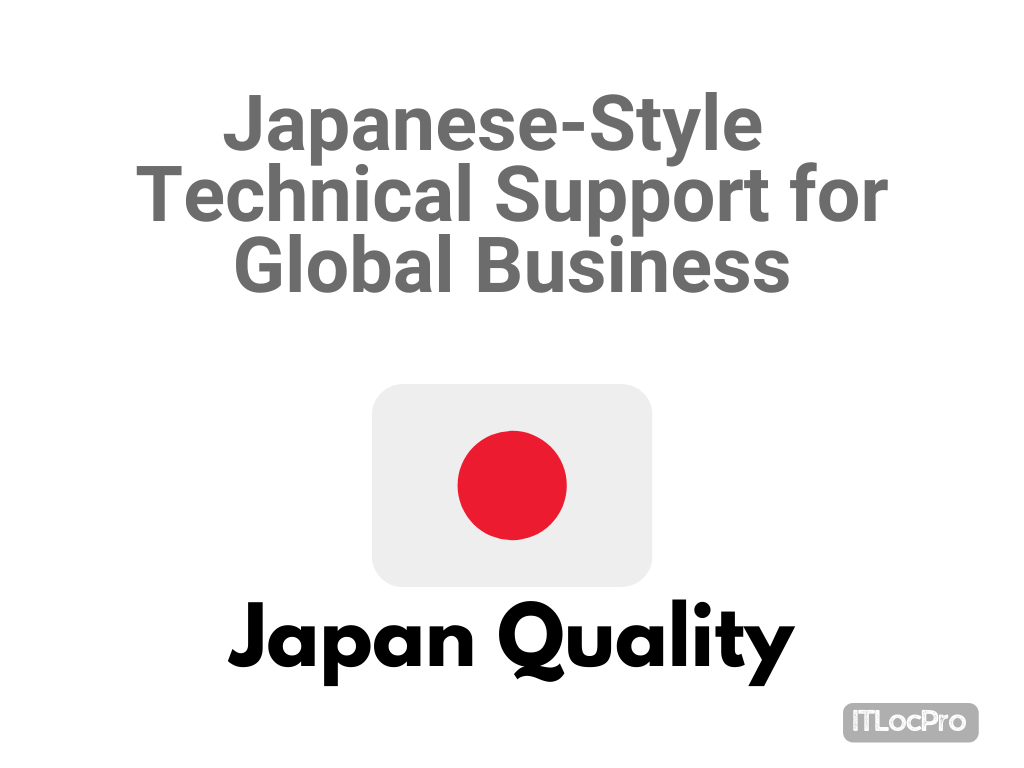
According to a survey conducted by American Express International, Japanese customers are more likely to exchange a product or change a service when they experience bad customer service. This shows that Japanese customers have higher expectations for customer service than customers in other countries.
“I take my business elsewhere after one bad service experience.”
- Japan: 56%
- U.K.: 37%
- Singapore: 33%
- Canada: 32%
- U.S.: 32%
- Italy: 32%
- India: 31%
- Mexico: 30%
- Hong Kong: 23%
As a Japanese well-known phrase, “customers are always right” describes, putting the customer first is considered important in business scenes in Japan. It relates to their value for the consideration of others, which is an important value in Japanese culture. Such cultural values are the source for the level of high-quality technical support. Compared with technical support in other countries, Japanese style technical support is of a higher quality and practices putting the customer first.
As statistics show that customers decide to continue to use a product or a service based on a great customer experience (reference: “IT Support“), Japanese-style technical support that delivers a great customer experience is a significant way to expand businesses. However, it also has some challenges for technical support teams, although it is beneficial for their customers.
Characteristics of Japanese Style Support
Customer First
Japanese technical support groups provide long-term training, which includes troubleshooting and report writing techniques, so they can provide high-quality technical support. Through the training, technical support members learn how to practice customer-first principles.
Seamless Technical Support
Japanese-style technical support provides seamless workflow with proper takeover of inquiries. When the support level changes or when a shift changes, a new responder will take over. At each time, the technical support group spends some time taking over the inquiries with details, such as the customer’s needs, the impact of the incident, the current status, and previous responses. The taking over ensures that the customers do not need to re-explain the inquiries, and that the support members continue to work as the initial responders.
When responders change in the United States, customers often need to re-explain their inquiries and provide the previous status to support members. This is one of the types of cases where customers feel highly stressed.
Incident Report
Since multiple companies are often involved in the systems and services of Japanese companies, it is necessary to confirm which company’s staff member was responsible for the problem. Identification of the cause of the incident is strongly required to prevent recurrence and to find the responsible person or people. Therefore, in addition to a quick resolution of the problem, a detailed incident report is required. This report will require analysis skills and deep knowledge of the product or service, including knowledge of its nondisclosure information.
Adjusted technical support to the customer’s technical level
Japanese companies provide technical training and allow people with non-technical college degrees to work as engineers. Therefore, the technical level of engineers in Japanese client companies varies. The technical support side provides adjusted answers that match the technical level of the engineers in the client company. Along with technical skills, communication and teaching skills are also highly necessary.
This situation is characteristic of Japanese client companies. In other countries, engineers (including members of the technical support group) are graduates of computer science related departments.
Challenges of Japanese-style technical support
Since Japanese enterprise customers highly expect a great customer experience, the technical customer support group has a great deal of responsibility. Controlling challenges is necessary to run the group.
Stress on the technical support side
The Japanese-style support profession has a high possibility of burnout and stress because of the large amounts of time resources used in time management quadrants 1 and 3 (reference: “Effective resource management for IT support“). For those burned out and under overwhelming stress, staff turnover is high.
Time resource usage on the support side
The customer first technical support requires more time for reporting, analyses, and taking over. Also, because of the high staff turnover, time to train new staff is necessary. Generally, the training would be for 3 months for level 3 technical support.
Best Support
Japanese-style technical support is high-quality and customer first support. For customers, this is the best style of technical support, but it is necessary to control the resources on the support side. Google and Amazon are successful companies that control resources by using self-support mechanisms and automation such as tutorials and knowledge bases.
Localization
Localization of technical support between Japan and other countries should be done in consideration of the differences in corporate culture and the required technical support style. As my post “IT Support” shows, quality of technical support is a key determinant of whether customers will continue to use a product or service. Localization can also control the resources of the support group in global business. Business globalization can be implemented effectively by implementing neural machine translation, terminology, and localization workflows that meet your needs.
Reference
“Why Japan’s Customer Service Is the Best in the World.” NextShark, 23 June 2017, nextshark.com/japans-customer-service-best-world/.
